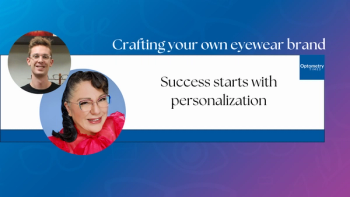
Brainstorming eye care research expansion with unlimited resources
From contact lens dropout to addressing diabetic retinopathy in rural communities, optometrists choose an area of eye care research that they would expand, given the appropriate resources.
In discussing areas of eye care research that optometrists would prioritize if they had unlimited resources, several key themes emerge. Dry eye and anterior segment diseases are a major focus for Shane Kannarr, OD, who sees a high prevalence of these conditions in their clinic. He is also particularly interested in finding ways to prevent vision loss from early diabetic retinopathy, which is common in the rural community they serve. Early intervention is seen as crucial for managing these serious eye health issues.
Andrew D. Pucker, OD, PhD, FAAO Dipl, FSLS, FBCLA, is passionate about understanding and reducing contact lens dropout, which affects around 20% of patients annually. They believe that more research in this area could help keep people in contact lenses longer, benefiting both patients and the overall market. The potential of genetic research in healthcare is also discussed.
Erin Rueff, OD, PhD, FAAO notes the challenges of identifying rare conditions and the need for larger, more diverse patient populations in studies. She is particularly interested in better understanding the genetic factors behind corneal disorders and how that could inform clinical practice. Improving minority representation in clinical trials is highlighted as a key priority.
Mark Bullimore, MCOptom, PhD, emphasizes the importance of ensuring research results are generalizable to the entire US population, rather than being skewed by underrepresentation of certain groups.
Finally, there is a focus on advancing ocular surface disease research, including improvements to diagnostic tools, treatment options, and data analysis, per Bridgitte Shen Lee, OD, FAAO, FBCLA, FEAOO. She advocates for faster, more accurate data collection, as well as the use of artificial intelligence and big data to provide clinicians with real-world insights on treatment outcomes.
Overall, optometrists have revealed a range of pressing research needs in eye care, from specific disease areas to broader issues of equity and innovation in clinical studies and patient care.
Newsletter
Want more insights like this? Subscribe to Optometry Times and get clinical pearls and practice tips delivered straight to your inbox.
















































.png)


